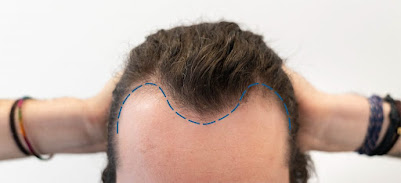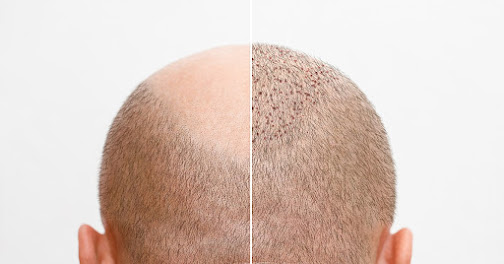When people begin researching hair restoration, one of the most common questions they ask is How Much Does a Hair Transplant Cost? Even though the topic centers on cost, it is important to understand the procedure, factors that influence pricing, and what contributes to long-term value rather than focusing on numbers. This introduction explores why individuals seek this treatment, how modern techniques enhance results, and what makes it a worthwhile investment for regaining confidence and natural appearance.
What Is Treatment And How It Works?
A Hair transplant in Dubai(زراعة الشعر في دبي) is a restorative method that relocates healthy hair follicles from a stable donor area to regions affected by thinning or baldness. Rather than using artificial fibers, this method relies on your natural follicles to produce long-lasting growth.
How It Works
-
The donor area is inspected for strong, resistant follicles
-
Follicles are extracted using specialized techniques
-
Tiny recipient sites are created for accurate placement
-
Grafts are implanted in patterns that match natural growth
-
Over time, transplanted follicles continue growing naturally
Importance Of Treatment:
Understanding the factors that influence the question How Much Does a Hair Transplant Cost? begins with recognizing its importance. This treatment is more than a cosmetic improvement; it provides long-term personal and emotional benefits.
Why It Matters
-
Restores a natural, fuller hairline
-
Enhances self-esteem and daily confidence
-
Offers permanent growth with your own follicles
-
Improves styling flexibility
-
Supports youthful appearance with subtle, realistic changes
Types Of Treatment:
Different techniques influence overall value, longevity, and aesthetic quality. Each method supports various goals depending on hair density and desired outcomes.
FUE (Follicular Unit Extraction):
Extracts individual follicles with minimal scarring and quicker healing.
FUT (Follicular Unit Transplantation):
Uses a strip method ideal for achieving high graft numbers while preserving donor density.
DHI (Direct Hair Implantation):
Employs an implanter tool for precise placement, reducing handling of follicles for enhanced survival.
Preparation And Aftercare:
Proper preparation and detailed aftercare ensure that the procedure delivers maximum long-term value.
Preparation Steps:
-
Keep the scalp free from heavy products
-
Discuss lifestyle habits and medications beforehand
-
Follow recommended adjustments for optimal follicle health
-
Maintain hydration and adequate rest before the procedure
Aftercare Tips:
-
Avoid rubbing or scratching the treated area
-
Follow washing instructions carefully
-
Keep the scalp protected from direct sunlight
-
Use gentle hair-care products to support healing
-
Avoid strenuous activity until fully recovered
Ideal Candidate:
Individuals best suited for treatment usually have stable hair loss patterns, strong donor follicles, and realistic expectations. Good overall health and patience during the growth phase also contribute to achieving the best outcomes. Those seeking a permanent, natural solution often find this option the most rewarding.
How To Choose A Right Clinic?
Selecting an appropriate facility plays a major role when evaluating the value behind the question How Much Does a Hair Transplant Cost?
Key Considerations
-
Use of advanced technologies and updated methods
-
Transparent explanations of the procedure
-
Clean, safe, and well-maintained environment
-
Access to before-and-after examples
-
Personalized assessments rather than one-size-fits-all care
-
Detailed guidance before and after treatment
Risks:
Although the procedure is generally safe, temporary and minor side effects may occur as the scalp heals.
Potential Risks
-
Mild swelling or redness
-
Temporary scabbing around grafts
-
Shedding phase where transplanted hairs reset
-
Uneven early growth before final density appears
These concerns usually resolve naturally with correct aftercare.
Benefits:
The benefits often outweigh temporary healing discomfort. This is why many individuals view the Hair transplant treatment(علاج زراعة الشعر) as a long-term investment in their appearance and confidence.
Notable Benefits
-
Permanent and natural-looking results
-
Enhanced density and improved hairline shape
-
Minimal maintenance once growth stabilizes
-
Increased confidence in social and professional settings
-
Customizable results tailored to aesthetic goals
-
Uses your natural follicles for authentic texture and color
FAQs:
Does the procedure provide permanent results?
Yes, transplanted follicles typically remain resistant to thinning and grow naturally.
Is the recovery long?
Most individuals experience relatively quick healing with proper aftercare.
Will the results look natural?
Modern techniques focus on natural angles, direction, and density.
Can everyone undergo the procedure?
Most people with healthy donor follicles and stable hair loss patterns qualify.
Is the treatment worth it?
For many, the lasting improvement and restored confidence make the investment valuable.
Conclusion:
Now that you understand How Much Does a Hair Transplant Cost?, it becomes clear that the true value lies not in numbers but in the quality of the technique, long-term growth, and personal satisfaction. With proper preparation, realistic expectations, and a well-chosen facility, individuals can achieve natural, permanent improvement that continues to enhance their appearance and confidence for many years.











